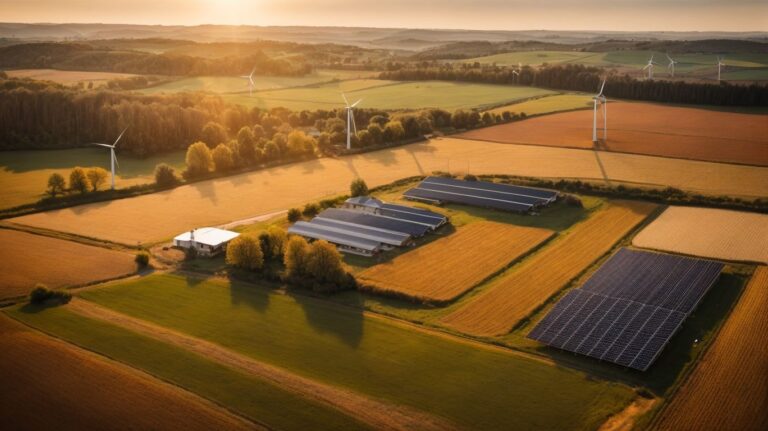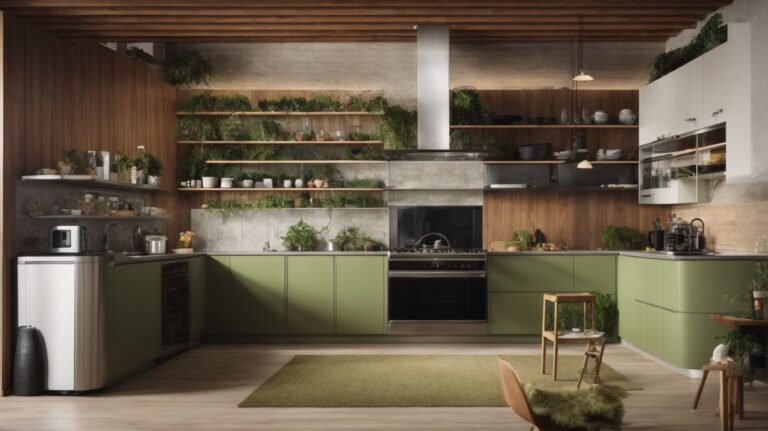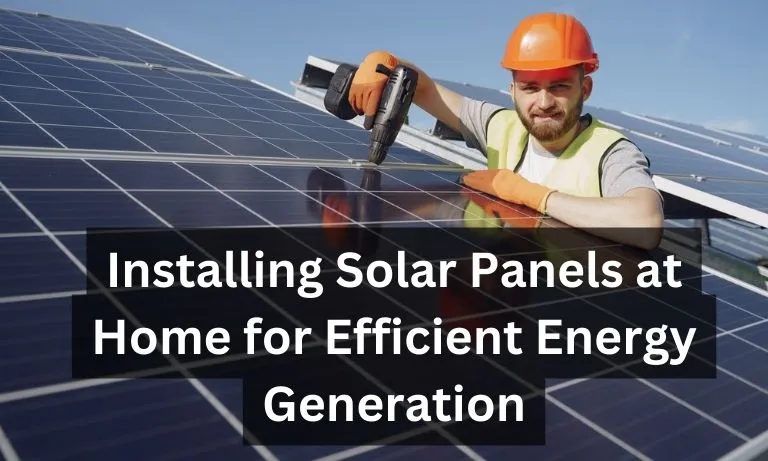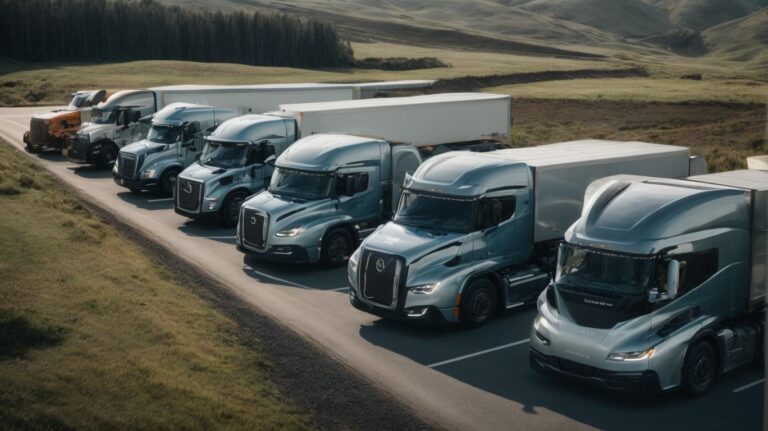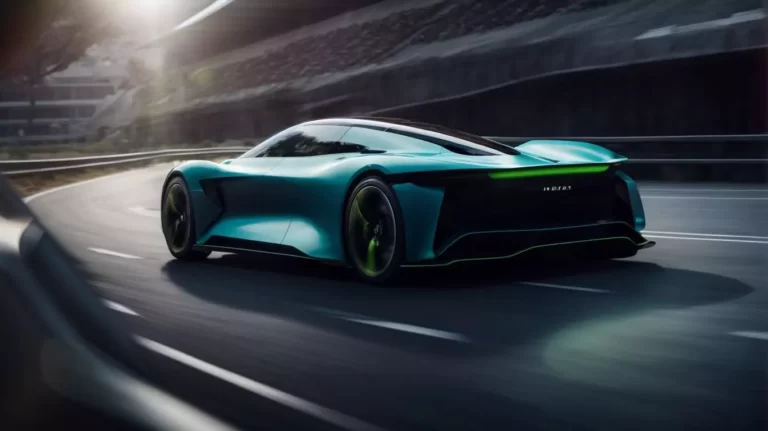Powering a Tiny House Off-Grid: A Comprehensive Guide
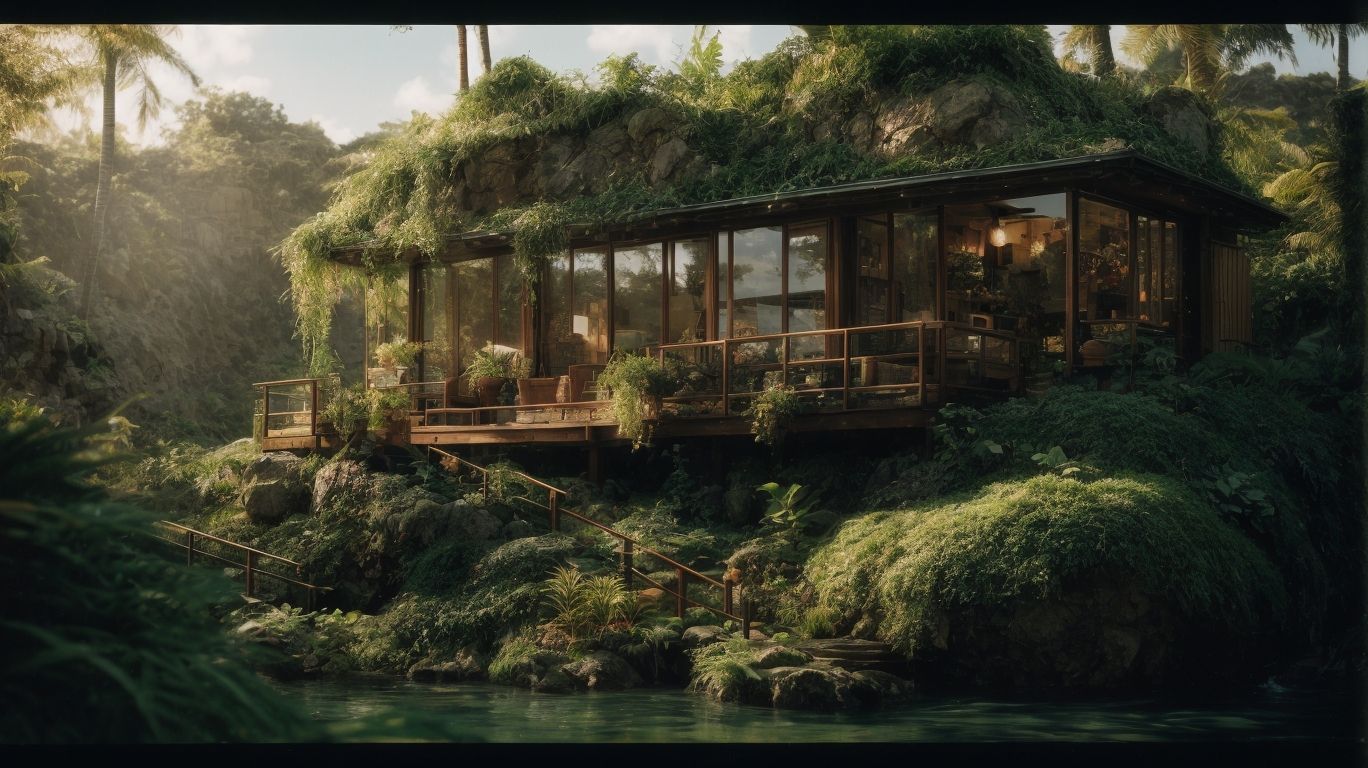
Are you looking to live a sustainable and minimalist lifestyle? Are you concerned about the impact of traditional housing on the environment and your wallet? Look no further, as this article will explore the practical and efficient ways to power a tiny house off-grid, helping you reduce your carbon footprint and save money.
What is a Tiny House?
A tiny house is a small, compact dwelling that typically ranges between 100 and 400 square feet in size. These homes are designed to maximize space efficiency while still providing all the necessary amenities for comfortable living. They often feature clever storage solutions, multi-functional furniture, and a minimalist aesthetic.
Tiny houses have gained popularity due to their affordability, sustainability, and the freedom they offer from the burdens of traditional homeownership. They can be built on wheels or on a foundation, allowing for mobility or permanent placement, depending on the owner’s preference.
Living in a tiny house requires careful consideration and a simplified lifestyle. It’s important to prioritize needs versus wants, as space is limited.
Pro-tip: Before embarking on the journey of owning a tiny house, it is recommended to spend time researching and visiting different models to determine if this lifestyle is the right fit for you. It is essential to understand the challenges and benefits of living in a tiny space before making a commitment.
Why Choose Off-Grid Power for a Tiny House?
There are several advantages to choosing off-grid power for a tiny house.
- Firstly, it offers independence and self-sufficiency. By generating your own power, you are not reliant on the electrical grid, which can be unreliable or inaccessible in remote areas.
- Secondly, off-grid power allows for greater flexibility in location. You can place your tiny house in any desired location without worrying about being connected to the grid. This opens up possibilities for living in nature or off-the-grid communities.
- Moreover, off-grid power is environmentally friendly. By utilizing renewable energy sources such as solar panels or wind turbines, you can reduce your carbon footprint and contribute to a sustainable lifestyle.
- Additionally, opting for off-grid power for a tiny house enables long-term cost savings. Although the initial investment may be higher, you will save money on utility bills in the future.
What Are the Options for Off-Grid Power?
When it comes to powering a tiny house off-grid, there are a few different options available. Each one has its own unique advantages and considerations to keep in mind. In this section, we will discuss the various options for off-grid power, including solar power, wind power, hydro power, and generator power. By understanding the pros and cons of each option, you can make an informed decision on the best way to power your tiny house off-grid.
Solar Power
Solar power is a popular and sustainable option for powering a tiny house off-grid. Here are the steps to implement solar power in your tiny house:
- Assess your power needs: Determine the energy requirements of your appliances and electronics.
- Select your solar power system: Choose the appropriate solar panels, batteries, charge controller, and inverter based on your power needs.
- Install the solar panels: Mount the panels on your roof or in an area with maximum sun exposure.
- Connect the components: Wire the solar panels, batteries, charge controller, and inverter together to create a complete power system.
- Monitor and maintain the system: Regularly check the performance of your solar power system and ensure the components are clean and functioning properly.
Solar power has a rich history dating back to the 7th century B.C. when humans first harnessed the sun’s energy to heat water. The modern solar power industry emerged in the 1950s, with advancements in photovoltaic technology. Today, solar power is widely used for residential, commercial, and industrial applications, providing clean and renewable energy to millions of people worldwide.
Wind Power
Wind power is a popular option for powering a tiny house off-grid. Harnessing the natural energy of the wind can provide a sustainable and renewable source of power. To incorporate wind power into your tiny house, follow these steps:
- Assess your wind resource: Determine if your location has sufficient wind resources to generate enough power.
- Select a wind turbine: Choose a wind turbine that suits your power needs and fits the size and aesthetics of your tiny house. Consider factors like rotor diameter, height, and noise levels.
- Installation: Install the wind turbine on a sturdy tower or pole, ensuring it is properly grounded and positioned to capture the maximum wind energy.
- Connect the turbine to a battery bank: Use a charge controller to regulate the energy flow from the wind turbine to the battery bank, ensuring the batteries are charged efficiently.
- Use an inverter: Convert the DC power from the batteries into AC power to power your appliances and devices in the tiny house.
- Monitor and maintain: Regularly inspect and maintain your wind turbine to ensure optimal performance and longevity.
Wind power offers the benefit of harnessing clean and renewable energy, reducing dependence on fossil fuels, and providing a consistent power source. However, it is essential to consider factors like wind speeds, turbine maintenance, and noise levels when incorporating wind power into your tiny house off-grid system.
Hydro Power
Hydro power is a reliable and sustainable option for powering a tiny house off-grid. This method utilizes the energy generated from flowing or falling water to produce electricity. Here are the steps to harness hydro power for your tiny house:
- Assess Water Source: Identify a suitable water source with a consistent flow or elevation drop.
- Calculate Power Potential: Determine the amount of power that can be generated based on the water flow rate and head (elevation drop).
- Choose Hydro System: Select the appropriate hydro power system, such as a waterwheel or micro-hydro turbine, depending on your power needs and available water resources.
- Install Equipment: Install the necessary hydro power equipment, including the turbine, generator, and electrical wiring, ensuring proper alignment and safety measures.
- Connect to Battery Bank: Connect the hydro power system to a battery bank to store excess power for use when the water flow is low.
- Install Power Inverter: Install a power inverter to convert the DC power generated by the hydro system into AC power for use in your tiny house.
- Monitor and Maintain: Regularly monitor and maintain the hydro power system to ensure optimal performance and troubleshoot any issues that may arise.
Harnessing hydro power for your tiny house can provide a sustainable and renewable energy source, reducing your reliance on traditional power grids and minimizing your environmental impact. Consider the available water resources and power requirements of your tiny house to determine if hydro power is the right choice for your off-grid lifestyle.
Generator Power
Generator power is a viable option for off-grid power in a tiny house. Here are the steps to incorporate generator power into your tiny house:
- Determine your power needs: Calculate the total power consumption of your appliances and electronics to determine the appropriate size generator for your needs.
- Choose your generator: Select a generator that meets your power needs and is suitable for your tiny house setup.
- Install the generator system: Set up the generator in a safe and well-ventilated area, following the manufacturer’s instructions.
- Connect the generator to your electrical system: Install a transfer switch to safely connect the generator to your tiny house’s electrical system.
- Monitor and maintain the generator: Regularly check the generator’s fuel levels, oil, and filters to ensure it runs smoothly and is ready for use when needed.
Generator power can serve as a dependable backup power source for your tiny house, particularly during periods of low renewable energy production or emergencies. For instance, John, a tiny house owner, relied on generator power during a severe storm that caused a temporary power outage. His generator kept his lights on and essential appliances running until power was restored.
What Are the Steps to Power a Tiny House Off-Grid?
Are you considering living in a tiny house off-grid? One of the most important aspects to consider is how you will power your home. In this section, we will discuss the necessary steps to power a tiny house off-grid. From determining your power needs to installing the power system, we will cover all the essential information you need to know. So, let’s get started and learn how to power your tiny house off-grid efficiently and sustainably.
1. Determine Your Power Needs
When determining your power needs for a tiny house, it is crucial to take into consideration your energy consumption and the specific appliances and devices you will be using. To accurately determine your power needs, follow these steps:
- Create a List: Make a comprehensive list of all the appliances and devices you plan to power in your tiny house, including lights, refrigerator, heating and cooling systems, water pump, and electronics.
- Research Power Requirements: Look up the power requirements for each item on your list, including the wattage or amperage needed to operate them.
- Calculate Energy Usage: Multiply the power requirement of each device by the number of hours you expect to use them each day. This will give you the daily energy consumption for each item.
- Add Up the Totals: Sum up the daily energy consumption for all the appliances and devices to determine your total power needs.
- Consider Future Needs: Anticipate any future changes or additions to your energy consumption, such as adding new appliances or increasing usage.
By following these steps, you can accurately determine your power needs and choose the appropriate off-grid power system for your tiny house.
2. Choose Your Power Source
When selecting the power source for your off-grid tiny house, it is important to consider factors such as availability, reliability, and sustainability. To help you make an informed decision, follow these steps:
- Assess your energy needs: Determine how much power you require on a daily basis.
- Research available options: Explore various power sources, including solar, wind, hydro, and generator power.
- Evaluate feasibility: Consider the location and climate of your tiny house to determine which power sources are most suitable.
- Weigh the pros and cons: Consider factors like cost, environmental impact, and maintenance requirements for each power source.
- Choose your power source(s): Select one or a combination of power sources that best meet your needs and align with your values.
- Design and install the power system: Work with professionals to design and install your chosen power system correctly.
- Monitor and maintain: Regularly monitor and maintain your power system to ensure optimal performance.
Fact: Solar power is one of the most popular choices for off-grid tiny houses due to its renewable nature and long-term cost savings.
3. Install the Power System
To successfully install an off-grid power system for your tiny house, follow these steps:
- Assess your power needs: Determine the amount of power you’ll require based on the electrical devices and appliances you plan to use.
- Choose your power source: Consider solar power, wind power, hydro power, or generator power based on your location and available resources.
- Install the power system: Set up the chosen power source, following the manufacturer’s guidelines for installing solar panels, wind turbines, hydroelectric systems, or generators.
- Connect the components: Install batteries, charge controllers, inverters, and electrical wiring to create a functional power system.
- Monitor and maintain: Regularly check the system’s performance, ensuring all components are functioning properly. Clean solar panels and wind turbines as needed to maintain efficiency.
By following these steps, you can successfully install an off-grid power system for your tiny house, allowing you to live sustainably and independently.
4. Monitor and Maintain Your Power System
Monitoring and maintaining your power system is essential for the efficient operation of an off-grid power system in a tiny house. To effectively monitor and maintain your power system, follow these steps:
- Regularly check the battery voltage and ensure it stays within the recommended range.
- Keep an eye on the solar panels, making sure they are clean and free from debris to maximize power generation.
- Monitor the power consumption of your appliances and adjust usage if needed to optimize energy efficiency.
- Regularly inspect the power system components for any signs of damage or wear.
Remember to create a maintenance schedule and perform routine tasks like cleaning the solar panels and tightening connections. It’s also important to educate yourself about troubleshooting common issues that may arise with your off-grid power system.
Pro-tip: Consider investing in a monitoring system that allows you to remotely track your power system’s performance and receive alerts in case of any abnormalities. This will help you stay on top of any potential issues and ensure the smooth operation of your off-grid power system in your tiny house.
What Are the Pros and Cons of Off-Grid Power for a Tiny House?
Off-grid power is a popular option for those looking to power their tiny home sustainably and independently. However, like any other power source, there are pros and cons to consider. In this section, we will discuss the benefits and drawbacks of using off-grid power for a tiny house. From lower costs and environmental benefits to initial investments and maintenance, we will cover all aspects of this alternative power source. So, let’s dive in and weigh the pros and cons of off-grid power for a tiny house.
Pros:
Choosing off-grid power for a tiny house comes with several advantages, making it an attractive option for many people.
- Lower Cost: Off-grid power allows you to save on utility bills since you are not connected to the grid. This can result in significant cost savings over time.
- Environmental Benefits: Off-grid power systems, such as solar or wind power, are renewable and produce clean energy. This helps reduce your carbon footprint and contributes to a more sustainable future.
- Self-Sufficiency: Being off-grid gives you independence and self-reliance. You are not reliant on external power sources and can generate your own electricity, providing a sense of empowerment.
However, there are also some drawbacks to consider:
- Initial Investment: Setting up an off-grid power system can require a significant upfront investment. The cost of solar panels, batteries, and other equipment can add up.
- Limited Power Supply: Off-grid power systems have limitations on the amount of power they can generate and store. This may require you to be mindful of your energy usage and make adjustments accordingly.
- Maintenance and Monitoring Required: Off-grid power systems require regular maintenance and monitoring to ensure optimal performance. This involves checking battery levels, cleaning solar panels, and troubleshooting any issues that may arise.
Considering these pros and cons will help you make an informed decision when it comes to powering your tiny house off-grid.
1. Lower Cost
When it comes to powering a tiny house off-grid, one of the major advantages is the lower cost. Here are the steps to achieve this:
- Determine your power needs: Calculate the amount of power required to run all your appliances and devices.
- Choose your power source: Research different off-grid power options like solar, wind, hydro, or generator power.
- Install the power system: Set up the chosen power system, following installation guidelines and safety precautions.
- Monitor and maintain your power system: Regularly check the performance of your system and perform necessary maintenance to ensure optimal functioning.
Implementing off-grid power for a tiny house offers several advantages. Some pros include:
- Lower cost: Off-grid power can significantly reduce or eliminate electricity bills.
- Environmental benefits: Using renewable energy sources reduces reliance on fossil fuels and decreases carbon emissions.
- Self-sufficiency: Off-grid power allows you to be self-reliant, not dependent on the grid for electricity.
However, there are some cons to consider as well:
- Initial investment: Setting up an off-grid power system requires upfront costs for equipment and installation.
- Limited power supply: Depending on the chosen power source, the amount of electricity generated may be limited.
- Maintenance and monitoring required: Off-grid power systems need regular maintenance and monitoring to ensure proper functioning.
2. Environmental Benefits
Off-grid power for a tiny house brings significant environmental benefits, making it a popular choice among eco-conscious individuals. Here are some advantages:
- Reduced carbon footprint: By harnessing renewable energy sources like solar, wind, or hydro power, tiny houses can significantly decrease their reliance on fossil fuels and lower their carbon emissions.
- Conservation of natural resources: Off-grid power systems promote sustainable energy consumption, reducing the strain on traditional power grids and preserving valuable natural resources such as coal or natural gas.
- Minimized environmental impact: Off-grid power eliminates the need for extensive infrastructure development, such as power lines or substations, reducing deforestation and minimizing habitat disruption.
- Increased energy efficiency: Tiny houses are often designed with energy efficiency in mind, incorporating features like energy-efficient appliances, LED lighting, and optimized insulation to decrease power consumption.
- Educational opportunities: Embracing off-grid power encourages individuals to learn about renewable energy sources and sustainable living practices, allowing them to pass on this knowledge to others.
Sarah, a passionate environmentalist, decided to power her tiny house off-grid using solar panels and a small wind turbine. By generating her own clean energy, she was able to decrease her carbon footprint and live in harmony with nature. Sarah’s commitment to environmental sustainability inspired her neighbors to explore off-grid power options, creating a mini eco-village where everyone embraced renewable energy and enjoyed the environmental benefits it brought.
3. Self-Sufficiency
Self-sufficiency is one of the main advantages of opting for off-grid power in a tiny house. By generating your own power, you can reduce your reliance on external sources and have more control over your energy usage. Here are the steps to achieve self-sufficiency with off-grid power:
- Determine your power needs: Calculate the amount of power you require for your appliances and electronics.
- Choose your power source: Select the most suitable option based on your location, climate, and available resources (solar power, wind power, hydro power, or generator power).
- Install the power system: Set up the necessary equipment, such as solar panels, wind turbines, or generators, and connect them to a battery bank or power storage system.
- Monitor and maintain your power system: Regularly check the performance of your power system, keep the batteries charged, and perform any necessary maintenance tasks.
Pro-tip: Prioritize energy-efficient appliances and consider implementing energy-saving strategies to maximize the self-sufficiency of your off-grid power system.
Cons:
Choosing off-grid power for a tiny house has several advantages, but it also comes with its fair share of cons. Here are some drawbacks to consider before opting for off-grid power:
- Initial Investment: Setting up an off-grid power system can be costly. It requires purchasing solar panels, wind turbines, batteries, or generators, along with installation expenses.
- Limited Power Supply: Off-grid systems are typically designed to provide enough power for essential needs. If you have high energy demands or rely heavily on power-hungry appliances, you may face limitations in terms of the amount of power available.
- Maintenance and Monitoring Required: Off-grid power systems require regular maintenance and monitoring to ensure optimal performance. This includes checking battery levels, cleaning solar panels, and troubleshooting any issues that may arise.
While off-grid power offers lower costs, environmental benefits, and self-sufficiency, it is essential to weigh these pros against the cons before deciding whether it is the right choice for your tiny house.
1. Initial Investment
When considering off-grid power for a tiny house, it’s important to understand the upfront costs involved. While there are some expenses to consider, there are long-term benefits that can outweigh these initial investments.
- Assess power needs: Determine the energy requirements of your tiny house, including appliances, lighting, and heating/cooling systems.
- Research power sources: Explore different off-grid power options such as solar, wind, hydro, or generator power. Consider the feasibility and suitability of each based on your location and budget.
- Calculate costs: Estimate the costs associated with each power source, including equipment, installation, maintenance, and any additional infrastructure requirements.
- Budget and financing: Develop a budget for your off-grid power system and explore financing options if needed. Consider long-term savings potential and return on investment.
- Installation and setup: Work with professionals to install and set up your chosen power system. Ensure proper wiring, connections, and safety measures are in place.
- Maintenance and monitoring: Regularly monitor and maintain your power system to ensure optimal performance and longevity. This may include cleaning solar panels, regular inspections, and battery maintenance.
While the initial investment for off-grid power may be higher compared to traditional grid power, it offers long-term benefits like energy independence, lower operating costs, and reduced environmental impact.
2. Limited Power Supply
Limited power supply is one of the main challenges when it comes to selecting off-grid power for a tiny house. However, with careful planning and efficient energy management, it is possible to overcome this limitation. Here are some steps you can take to mitigate the impact of limited power supply:
- Assess power needs: Start by determining the specific power requirements of your tiny house, including appliances, lighting, heating, and cooling systems. This will help you understand how much power you need to generate and manage.
- Energy-efficient appliances: Make sure to invest in energy-efficient appliances and devices to reduce power consumption.
- Prioritize power usage: Identify essential appliances and prioritize their power usage. This will help you avoid overloading the system and ensure that critical functions are always powered.
- Battery storage: Consider installing a battery storage system to store excess power generated during peak production times. This will provide a backup power source during low production periods.
- Energy management: Implement energy management strategies such as turning off unused appliances, using natural lighting, and optimizing heating and cooling systems.
- Backup generator: In case of extended periods of low energy production, it may be beneficial to install a backup generator to provide additional power.
By following these steps, you can effectively manage and maximize the limited power supply in your off-grid tiny house.
3. Maintenance and Monitoring Required
Maintaining and monitoring an off-grid power system is crucial for the optimal functioning of a tiny house. Here are some steps to ensure the longevity and efficiency of your power system:
- Regular Inspections: Conduct routine checks of the system components, including solar panels, batteries, and wiring, to identify any potential issues.
- Cleaning and Maintenance: Keep the solar panels clean and free from debris to maximize their energy absorption. Regularly inspect and maintain battery connections and terminals.
- Battery Monitoring: Continuously monitor the battery voltage, capacity, and charge levels to avoid overcharging or deep discharging, which can damage the battery. Consider using a battery monitor or management system.
- System Performance Monitoring: Keep track of the power output and consumption of your system to identify any inefficiencies or changes in performance. This will help you optimize energy usage and detect any malfunctions.
- Seasonal Adjustments: Depending on the climate and seasonal changes, you may need to adjust the angle and orientation of the solar panels to maximize energy generation.
- Emergency Plan: Have a backup power source or plan in case of system failure or low power generation due to unforeseen circumstances.
Remember, regular maintenance and monitoring are necessary for the reliability and longevity of your off-grid power system for your tiny house. Fact: A well-maintained power system can provide sustainable energy for a tiny house for years to come.

